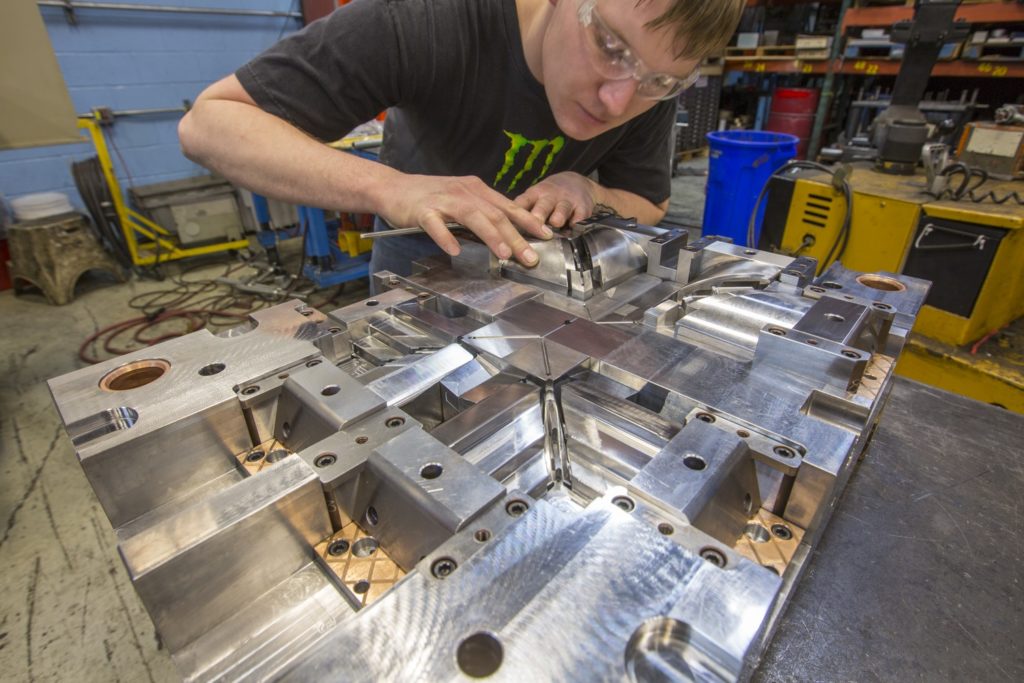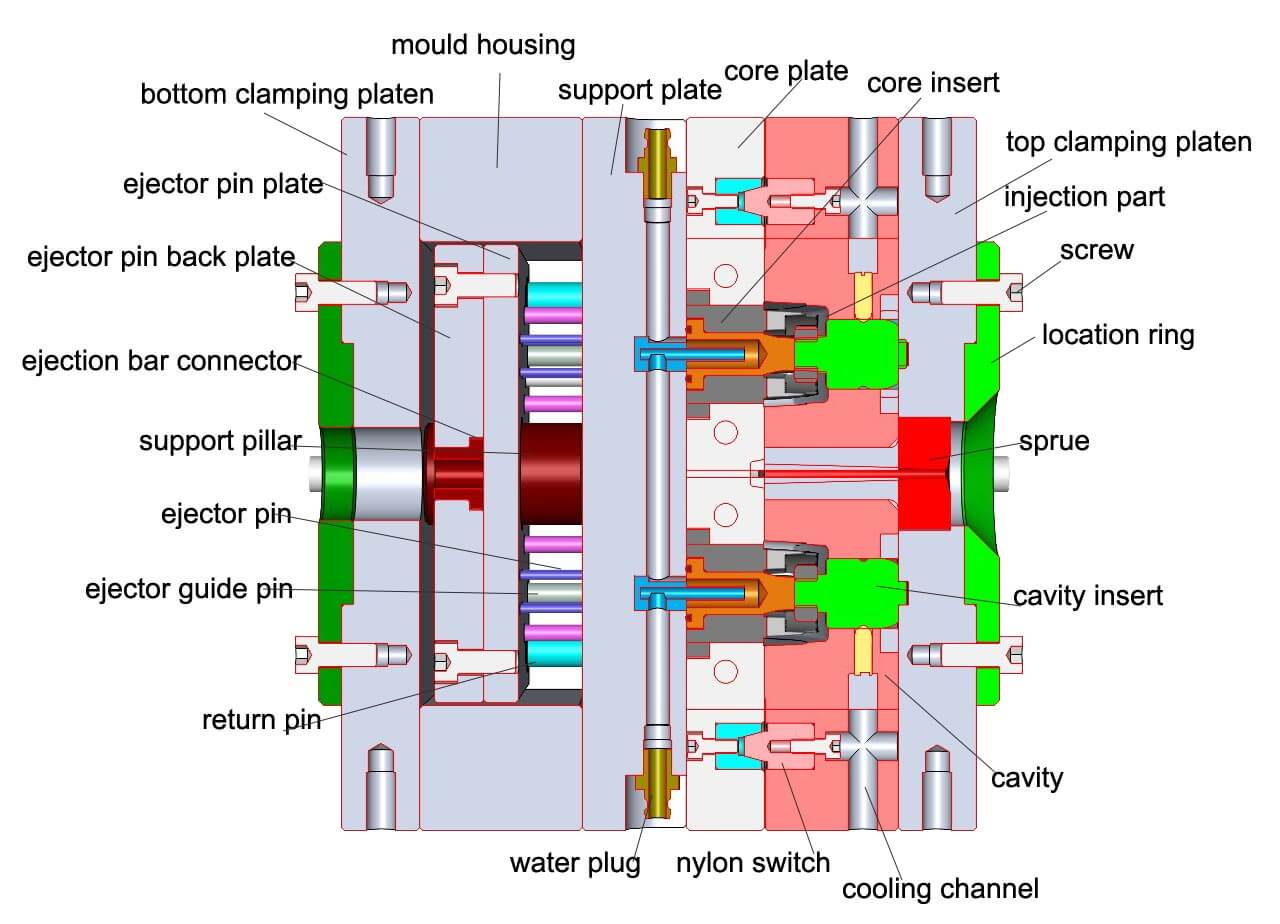Table Of Content

Surface finishes can be used to give an injection molded part a certain look or feel. Besides cosmetic purposes surface finishes can also serve technical needs. Injection molding is widely used today for both consumer products and engineering applications. Almost every plastic item around you was manufactured using injection molding.
Injection Molding Process
Before 1950, most products were manufactured in stamped steel, die-cast aluminum, zinc, and wood. Plastic products were primarily limited to phenolics, polystyrene, and other thermosets. However, the booming post-WWII economy spawned a renaissance of research and development in new plastic materials and processing innovations, leading to the hundreds of thousands of plastics we have today. Throughout the past 70 years, injection molding has matured and become more sophisticated, versatile, and complicated, enabling it to dominate the manufacture of most mass-produced products today.
Threaded fasteners (bosses and inserts)
The right manufacturing process for a certain part is largely dependent on the development criteria. In some cases, multiple production processes can be used to create any given design. As a rule of thumb, choose the process that can produce the given part with the required quality, at the lowest costs, while fulfilling the rest of the development criteria.
Mold Imbalance Goes With the Flow...Literally - PlasticsToday
Mold Imbalance Goes With the Flow...Literally.
Posted: Fri, 01 Dec 2023 03:35:25 GMT [source]
The Core Side
Unless the shape of the product is limited, other ejector pins must be used. Generally, cylindrical ejectors are used, and elongated ejector pins with a diameter less than 3mm should be avoided. 2.The reset rod (return rod) must be set in the ejection system to help the ejector rod return.
Thermoforming / Vacuum Forming Tooling
Mold design begins by selecting the material and shape of the mold, as well as its size, capacity, and other specifications. Additionally, considerations like temperature requirements during manufacturing, material type used, and desired properties of the final product must be considered during this step. Before you commit to any expensive injection molding tooling, first create and test a functional prototype of your design. Learn more about the main cost drivers in injection molding and actionable design tips that will help you reduce the costs of your project. A good rule of thumb is to increase the draft angle by one degree for every 25 mm. For example, add a draft angle of 3o degrees to a feature that is 75 mm tall.
Between piece molds and lost wax: the casting of a diatrete ornamentation in early China rethought Humanities and ... - Nature.com
Between piece molds and lost wax: the casting of a diatrete ornamentation in early China rethought Humanities and ....
Posted: Mon, 31 Jul 2023 07:00:00 GMT [source]
Injection Molding Materials
Rapid prototyping techniques such as3D printing will remain essential in mold design, enabling designers to rapidlycreate and test molds before mass production begins. Computer Numerical Control(CNC) machining is a viablealternative to traditional metal molds, providing high-temperature andwear-resistance products. Manufacturers will experience more efficient andcost-effective production processes by integrating advanced technologies intomold design considerations. In fact, packaging is the largest market for injection molding.For example, bottle caps are injection molded from Polypropylene. There are several factors that may affect the quality of the final product and the repeatability of the process. The main economic restriction of injection molding the the high cost of tooling.
Components of a Plastic Injection Mold
Larger draft angle should be used if the part has a textured surface finish. As a rule of thumb, add 1o to 2o extra degrees to the results of the above calculations.Remember that draft angles are also necessary for ribs. Be aware though that adding an angle will reduce the thickness of the top of the rib, so make sure that your design complies with the recommended minimum wall thickness. Undercuts in injection molding are part features that cannot be manufactured with a simple two-part mold, because material is in the way while the mold opens or during ejection.
Get Started With 3D Printing Molds

Features with undercuts (such as the teeth of a thread or the hook of a snap-fit joint) may not be manufacturable with a straight-pull mold though. This is either because the mold cannot be CNC machined or because the material is in the way of ejecting the part. If more complex geometries are required, then retractable side-action cores or other inserts are required.
Outline the Development Criteria for Your Project
The main restrictions on Injection Molding usually come down to economics, as high initial investment for the mold is required. Also, the turn-around time from design to production is slow (at least 4 weeks). During the cooling process, if walls are an inconsistent thickness, the thinner walls will cool first while the thick walls are still solidifying. As the thick section cools, it shrinks around the already solid thinner section.
When the two are closed, space between is the part cavity where the molten plastic fills. There are different mold types like hot runner molds, two/three-plate molds, high/low cavitation, unscrewing molds, cold runner molds, family molds, and insulated runner molds. Currently, industries are trying to apply sustainable measures in their manufacturing as it is a global trend and this affects the process since they have to change some aspects to fit this idea. Injection molding companies have to find ways of reducing their carbon footprint. This section provides a brief overview of mold-making techniques for different manufacturing processes. Follow our links for in-depth guides and the step-by-step workflow for each process.
Once these are reviewed and approved, the detailed design is finalized. The school has received $50,000 in grants from the Ahmanson Foundation to participate in the program, Moran said. The point of the project, said Holbert, is to one day enable the space station to 3D-print replacements for things that break on board, such a fasteners or tools, rather than having to ship them from earth. 4.We will decide the type of injection system, conduct Moldflow analysis, and confirm the gate form, location, and numbers.
Presentations will cover 3D printing for mold tooling, material innovation, product development, bridge production and full-scale, high-volume additive manufacturing. Student satisfaction at the end of the semester when they hand off their parts to the class is unique and irreplaceable. The primary learning experience is manufacturing original plastic parts using mold inserts that they have created as a team from scratch. The expansion of virtual or online education, which is a timely topic, will continue to open up new opportunities for improvement; however, it is always going to be a different learning experience.
Gates are often located in open features such as windows or voids where other parts are inserted. If the edges of the part are critical for mating to another part or are cosmetically important, the designer must specify that the gate vestigial be machined to their specifications. Otherwise, the remaining material could interfere with mating parts or be cosmetically unacceptable. This guide walks you through everything from quoting, design analysis, and shipment to best practices that ensure your model is optimized for molding. External undercuts are the easiest and most cost effective as we accommodate through pin-actuated side-actions.
The purpose of the injection unit is to melt the raw plastic and guide it into the mold. In the mid 1950s, the invention of the reciprocating screw single-handedly revolutionized the plastics industry. The reciprocating screw solved key issues with uneven heating of the plastic that previous systems faced, and opened up new horizons for the mass production of plastic parts. In cases that are not adaptable for side-actions, we can use manually removed inserts. These are mold components that are greater than a half-inch cube and are loaded by an operator into the press before it closes. After the part has been molded, the part is ejected along with the insert.
The tool builder is given the tool design specifications for mold construction. Final adjustments and modifications are done in-house, with special attention given to manufacturability and critical dimensional requirements. Draft angles refer to the degree of taper added to a part’sdesign, which allows it to eject from the mold quickly. A draft angle helpsprotect surfaces during ejection and minimizes mold damage during removal. The wall thickness of a part is essential in ensuring itsstructural integrity. A suitable thickness should be consistent across thepart, giving it sufficient strength and rigidity while avoiding problems suchas warping or sink marks.
This is because the technology can produce identical parts at very high volumes (typically, 1,000 to 100,000+ units) at a very low cost per part (typically, at $1-5 per unit). The Mold Engineering class is one of the most unique and appreciated classes in the curriculum. Recent feedback from the Accreditation Board for Engineering and Technology (ABET) feedback has confirmed it the premier design experience in the university’s undergraduate curriculum. “Since there is no need for translation between design and manufacturing, changes in design are automatically updated and toolpaths are flagged to show any changes. Machine operators can view the toolpaths and clearly understand the production process, eliminating the need for excessive documentation.

No comments:
Post a Comment